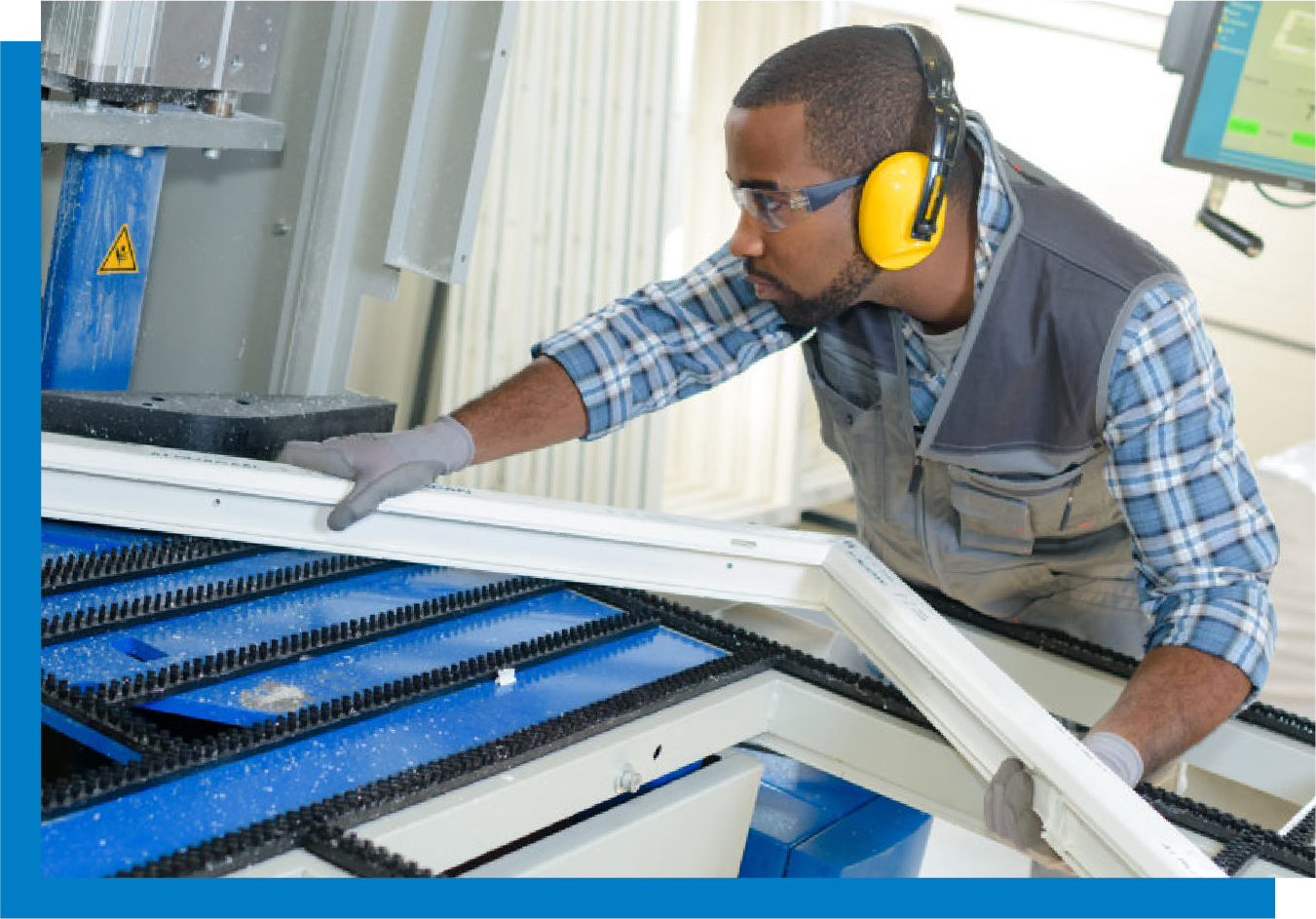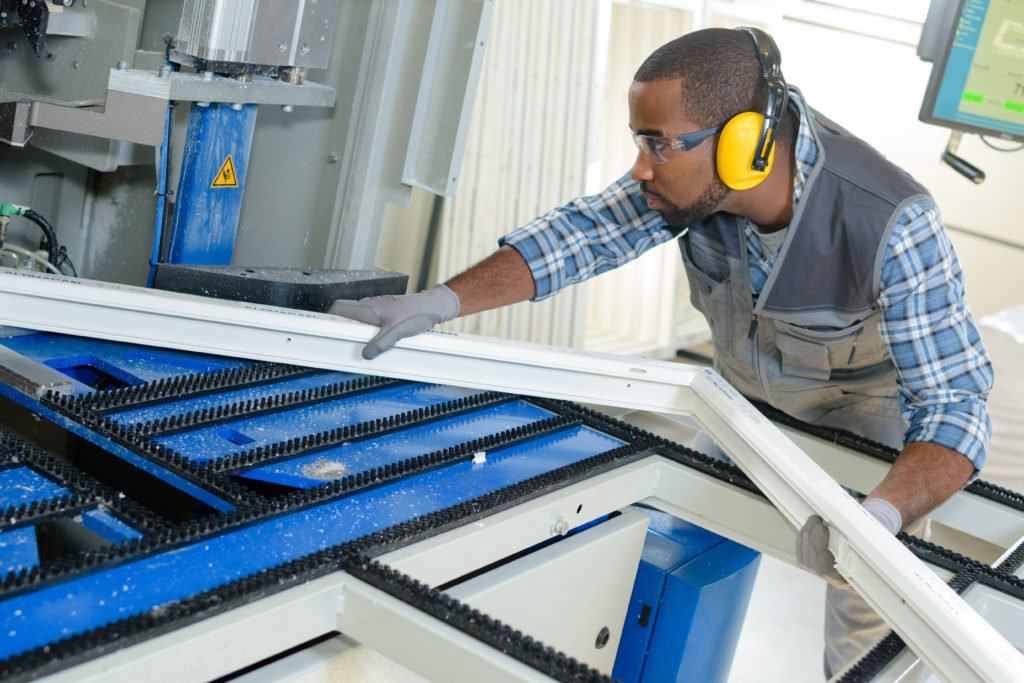Controlling Occupational Exposures
The role of an industrial hygienist is to recognize potential exposure hazards, evaluate exposures, provide input for the development of controls, and finally evaluate control methods for effectiveness in reducing exposures.
When controls are warranted, the process begins with a risk assessment to characterize the problem. The hygienist can provide assistance in identifying and characterizing the hazard, the emissions and sources, worker involvement with the sources and how air movement occurs.
Control measures can be grouped into three categories: administrative, engineered, and personal protective equipment. When considering controls, there are five fundamental assumptions to bear in mind:
All hazards can be controlled (to some degree).
There are different approaches for control.
Sometimes, more than one control method is needed.
Some control methods are more cost-effective than others.
Controls may not always be completely effective in limiting the exposure hazard.
Administrative controls place part of the burden of control on the worker and are often not completely effective when used as a single approach. Examples of administrative controls include rotating workers, providing best practice training for performing job tasks, improving personal hygiene, and implementing housekeeping programs.
When considering options, it is necessary to evaluate the sources of exposure, the way in which it can affect the worker, and the route of entry. Typical routes may include unprotected exposure to noise, skin contact or inhalation of vapors and aerosols. The controls considered should be matched with the employee, the process or task, and be cost-effective. In some cases, there are regulatory requirements for controls such as the OSHA (Occupational Safety and Health Administration) requirement for exhaust ventilation for abrasive blasting (1910.94).
Worker rotation is frequently used to reduce the amount of time a worker is exposed to a hazard. A common example is rotating workers performing jobs in high-noise areas. Another example is to move workers every few hours who perform highly repetitive job tasks to reduce musculoskeletal strain.
Training in good work practices can significantly reduce exposures. For example, coaching proper body postures such as how to stand and position the head while welding or reinforcing the need to face forward to work and pivot feet instead of twisting the body.
Good housekeeping and personal hygiene are also important components of administratively controlling exposures. Settled dust becomes a secondary source of exposure with increased air movement, traffic activity and vibration produced by equipment. Frequent cleaning helps to prevent dust accumulating on surfaces.
Training and reinforcing the need for personal hygiene, such as frequently washing hands and avoiding hand to mouth contact while working can reduce the risk of exposure by ingestion. Several standards contained in OSHA 1910 Subpart Z for toxic and hazardous substances mandate personal hygiene practices. Administrative controls are usually used in conjunction with engineered controls.
Although they are more expensive to implement, engineered controls are the most effective since they offer greater cost savings over time. Examples of engineered controls include source modification, substitution, process change, isolation, and ventilation. The development and installation of engineering controls is usually the responsibility of a facilities engineering department and maintenance staff.
Source modification refers to changing an emission source to make it less hazardous. An example of source modification is wetting dust particles released in a foundry shakeout operation to reduce dispersion. Another example may be to reduce temperatures to lower the level of chemical off-gassing and vaporization.
Modifying a process to reduce the hazard is another type of engineered control. An example of this would be to dip rather than to spray paint parts. Automation would also be an example of changing the process. A good example is robotic welding to replace manual welding.
Substitution refers to changing to a different material, type of equipment, or process to reduce the hazard. Examples include substituting a solvent having a low occupational exposure limit (OEL) and higher vapor pressure to a different solvent having no established OEL, or a lower OEL and less volatility.
Isolation refers to separating employees from hazardous processes, equipment, or environments. Isolation can be achieved by placing barriers around equipment or materials, such as the use of ventilated flammable cabinets or placing enclosures around high-noise sources. Isolation separates employees from hazards. Examples are control rooms, isolation booths and supplied air islands.
Ventilation is frequently used as a method to control emissions near the source or to dilute emissions to levels that are acceptable. Local exhaust ventilation (LEV) attempts to eliminate emissions to the work room air. LEV controls are designed to capture, control, or eliminate emissions using control structures such as hoods, exhausted enclosures, ductwork, air cleaners, fans, and exhaust stacks.
General exhaust ventilation relies on fresh air dilution, either by open doors, windows or make-up air provided by air intakes and ventilation systems. For constant emission sources, effective dilution relies on good air mixing and constant air flow.
In addition to engineered solutions, regular and preventative maintenance is an important part of preventing uncontrolled and unexpected exposures. Insufficient maintenance could result in a catastrophic failure such as a rupture failure, increasing leaks from flanges, seals, access doors, and breakdowns of equipment.
Personal protective equipment (PPE) should always be used as the last option for control when other methods of control are not feasible or effective enough to reduce exposure to safe levels. Relying solely on earplugs or respirators places the burden of control on the worker and the protection is only as good as how properly the PPE is fit, worn, and maintained.
There are many different options to help keep workers safety, contact us to evaluate exposure concerns in your facility.
Mary Dunlap is a Certified Industrial Hygienist and has been with Cornerstone Environmental, Health and Safety since 2016. When she is not working, you can find Mary enjoying the outdoors.
Source: Case Studies: Sixty Practical Approaches of OH&S Control Principals. D. Jeff Burton, MS, PE (former CIH (Certified Industrial Hygienist), CSP)
Recent Posts
Industrial Hygiene Services Prevent Health Hazards for the Plastics Industry
The U.S. plastics industry employed just under one million workers in 2020 and continues to grow and expand. Leading the way in production and employment are Texas, Ohio, and California. In addition to environmental and safety issues, health hazards associated with the production of plastic products are a concern and should be recognized.
Man manufacturing upvc frame
Types and Characteristics of Commonly Used Plastics
The major types of plastic are classified as thermosets, elastomers, and thermoplastics. Thermosets are heated and require a curing agent which results in a permanent form that cannot be reground and reused. Elastomers can return to the original shape and size after deformation but are not formed by the same process as rubber. Thermoplastic polymers (resins) are widely used because they can be re-ground and re-molded; thereby eliminating waste and reducing production costs.
The most common thermoplastic polymers in use include:
Polyethylene
Polypropylene
Polyvinyl chloride (PVC)
Polystyrene
Acrylonitrile-butadiene- styrene (ABS)
Styrene acrylonitrile
Styrene-butadiene copolymers
Prior to molding, thermoplastic resins are mostly inert and present a low health risk except for any unreacted residual monomers, or molecules that bond together to form the polymer structure. A striking example of the effects of overexposure to resin dusts occurred in the 1970s when several workers who handled PVC resins were diagnosed with angiosarcoma, a rare liver disease. A significant reduction in exposure that lowered the risk for the development of disease was achieved when controls were applied to reduce the amount of unreacted monomer present in PVC resins. The levels went from as high as 1 percent to 0.001 percent.
Other sources of exposure can occur when the additives are combined with the resins to produce specific properties for the end product. Ideally, this occurs in a closed-looped system that exhausts the dust and minimizes exposure. In smaller operations, this is often not the case.
Additives are added to modify the properties of resins, aid in the molding process, and provide color. Common additives include flame retardants, antioxidants, blowing agents, optical brighteners, antistatic agents, UV light absorbers, fillers, solvents, curing agents, and reinforcements. Nearly 2,500 different chemicals are used in the production of additives. Additive compounds that commonly pose risks include:
Phthalates in plasticizers
Antimony, boron, bromine compounds in flame retardants
Hydrochlorofluorocarbons (HCFCs) and azodicarbonamide in blowing agents
Toxic heavy metal compounds (lead, cadmium, and chromium) in colorants
Thermal degradation products from organic colorants that are used as alternatives to metal compound colorants
Hazards During the Molding Process
The next phase where hazards exist is during the molding process, when the mold is released, and during purging and maintenance. Purging is performed whenever there is a resin or color change, or maintenance is needed on equipment. During purging, higher than usual molding temperatures are needed to clear the equipment of residue, and smoke is produced that may contain thermal degradation products from the resin and additives.
To protect workers, it is necessary to provide adequate exhaust ventilation in and around molding lines. If ventilation controls are inadequate in controlling dust levels during mixing, mists and vapors during mold release, or smoke generated during purging, occupational exposures should be assessed.
Sampling Strategy
The starting point for designing a good strategy for sampling is to review Safety Data Sheet (SDS) information for the resin and additives used in the process to determine regulated components and thermal degradation products. Some examples of constituents that are commonly assessed during personal sampling include the following:
Butane- contained in n, and acrolein in polypropylene resins
Hydrogen chloride in PVC resins
Styrene contained in polystyrene
Phenols and butadiene contained in ABS resins
Nuisance dust
When results from sampling are available, it can be determined if exposures have exceeded occupational exposure limits (OELs) established by the Occupational Safety and Health Administration (OSHA), the American Conference of Governmental Industrial Hygienists (ACGIH), and the National Institute of Occupational Health and Safety (NIOSH). If exposures exceed OELs, the proper respiratory protection can be provided to the workers in accordance with the OSHA Respiratory Protection standard but should be used only as a stopgap before control measures can be implemented and tested for effectiveness.
Noise Exposure
Another health hazard to consider in the plastics industry is noise exposure. It is common for noise exposures to exceed the OSHA Action Level (AL), which is 85 “A”-weighted decibels (85 dB(A) for hearing conservation.
In a typical operation, there is a high density of noise sources such as motors, fans, hydraulic pumps, and other equipment. Depending upon the size of the operation, exposures can even exceed the Permissible Exposure Limit (PEL) of 90 dB(A), and when that occurs, engineering and/or administrative controls are needed to reduce exposures.
Personal noise exposures are easily assessed utilizing calibrated noise dosimeters that record and average sound levels throughout the work period. The data logged is then used to determine the 8-hour time-weighted average exposure which can then be compared with the AL and PEL.
Further Information
Cornerstone serves clients that produce plastic products or packaging used by the food and beverage industry, health and beauty products, and a variety of consumer goods. Our Health and Safety department can perform a Personal Exposure Assessment to observe operations, job tasks, and work practices for air, noise, and ergonomic safety. Our experts provide reports of risks, prioritize areas for changes, and recommend control measures. Contact Cornerstone at info@corner-enviro.com or on our website for more information.
Mary Dunlap CIH, is a Senior Industrial Health and Safety Specialist and Certified Industrial Hygienist. She works with Cornerstone’s clients to develop exposure assessment strategies tailored for their work environments. She regularly performs ergonomic assessments using a variety of OHA and NIOSH tools to rate severity of risk for work related to musculoskeletal disorders.
References:
Recognition of Health Hazards in Industries – Second Edition, William A. Burgess
The Hazards of Plastic Injection Molding and Recommended Engineering Safety Controls – Sentry Air Systems






